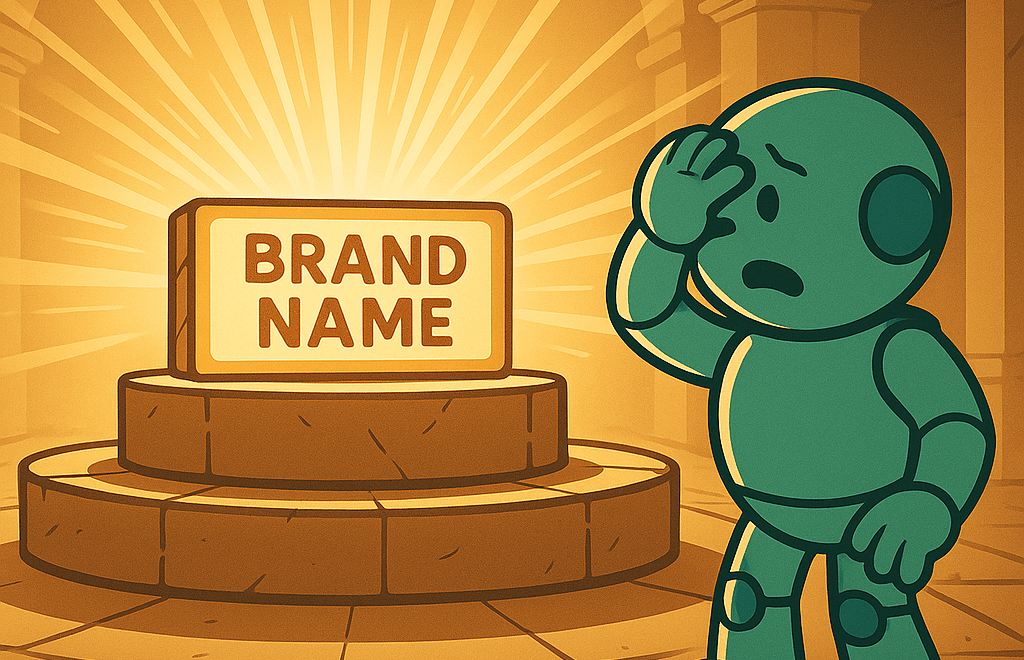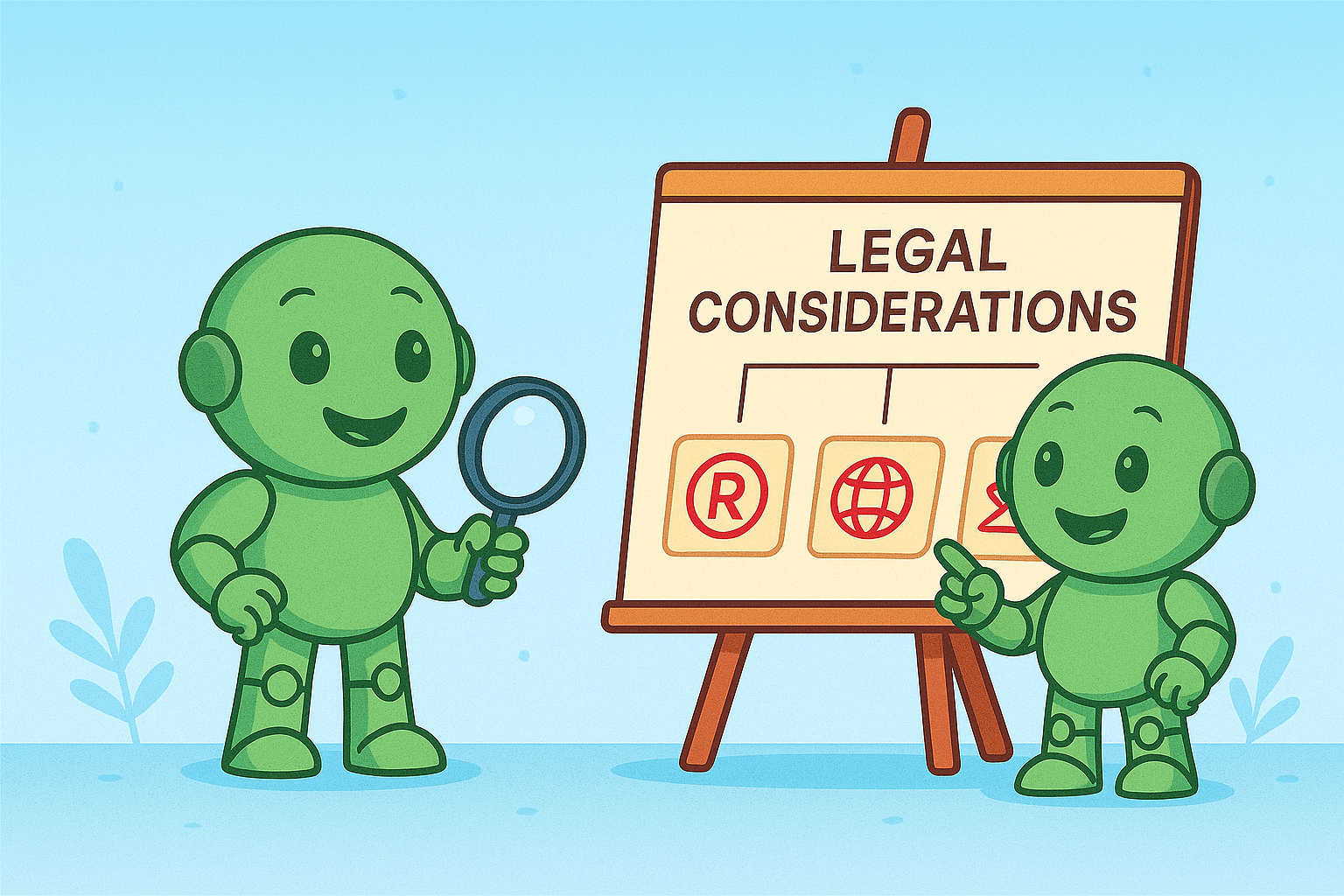Company Naming Rules: Your Complete Legal Compliance Guide
Why Company Naming Rules Matter More Than You Think

The screenshot above, from Wikipedia's page on Business Registration, highlights just how complicated and varied registration processes are around the globe. This underscores why carefully considering company naming rules is so important. These rules change significantly from place to place and have a direct impact on whether your business is legally compliant.
Think of your company name as the foundation of your brand. Imagine building a house on unstable ground – no matter how beautiful the structure, a weak foundation will eventually lead to problems. Similarly, ignoring naming rules can lead to expensive legal disputes, the headache of rebranding, and damage to your reputation. That's why understanding these rules right from the start is crucial.
Protecting Your Brand and Your Wallet
Choosing a company name isn't just about finding something catchy. It's about creating a legally sound brand identity. Ignoring naming rules can lead to trademark infringement, which can bring cease-and-desist letters, significant fines, and even being forced to rebrand. Imagine the wasted time, money, and effort rebuilding your brand identity just because you overlooked a seemingly minor detail.
For example, let's say you launch a clothing line called "Fashion Forward," only to discover another company has already trademarked that name for footwear. Suddenly, you're in a legal battle and potentially back to square one. Understanding company naming rules helps you avoid these kinds of costly surprises.
Navigating the Legal Maze
Company naming rules vary significantly depending on where you are in the world. Some countries have very strict rules about using certain words or phrases, while others are more flexible. Navigating these legal differences can be challenging, but it's essential for protecting your business.
Furthermore, different business structures have their own naming requirements. For example, a Limited Liability Company (LLC) must include "LLC" in its name, while a corporation might use "Inc." or "Corp." These seemingly small details are actually part of the legal framework that defines your business and protects its legal status.
Building a Strong Brand Foundation
By following company naming rules, you're building a solid legal foundation for your brand. This not only protects you from legal trouble but also builds trust with your customers. A company that shows respect for the law projects an image of professionalism and dependability.
What's more, following the rules simplifies the business registration process. A compliant name gets approved faster, letting you concentrate on building your business instead of dealing with legal paperwork. This proactive approach saves valuable time and resources, allowing you to focus your energy on the more important aspects of your venture. A strong foundation ensures your brand can weather potential storms and enjoy a smoother path to success.
The Legal Landscape Every Business Owner Must Navigate

The infographic above gives a visual overview of the key legal points you need to consider when naming your company. Think of it as a triangle with three essential sides: trademark searches, domain availability, and regulatory compliance. These three elements are interconnected and form the bedrock of a legally sound business name. If one side of the triangle is weak, the whole structure can crumble.
Picking a company name might seem simple, but legally, it can be a bit like navigating a dense forest. Luckily, there are established trails – the rules and regulations surrounding company names. These rules might seem complicated at first, but they're there to help you avoid problems and ensure everyone plays fair.
Understanding Restrictions and Requirements
So, what kind of rules are we talking about? Well, many regulations dictate which words you can't use. For example, words related to specific industries, like "bank" or "insurance," are often restricted. You also need to think about including the right legal designations, like "Inc." or "LLC." These identifiers tell everyone what type of business you are, which helps avoid confusion and builds a clear legal identity.
Knowing the specific rules in your region is absolutely crucial. Some countries won't allow names that are offensive or could mislead customers. Others have rules about using national symbols or historical figures. Even the structure of your business (sole proprietorship, partnership, LLC, etc.) can affect your naming options. Getting this right from the start can save you a lot of headaches later on.
Furthermore, you absolutely must consider trademark infringement. Imagine putting months of work into building your brand, only to find out someone else already has a similar name trademarked. This could force you into costly legal battles and even a complete rebrand, setting you back significantly. A thorough trademark search is essential. For a deeper dive into this topic, check out our article on trademark law. Understanding trademark law protects your brand and helps you avoid conflicts.
Global Considerations for Company Naming
If you're thinking globally, things get even more interesting – and complex. Each country has its own set of naming regulations. A perfectly acceptable name in one country might be completely off-limits in another. Going global means carefully researching each target market's specific naming conventions. In these situations, thorough research and advice from legal professionals can be incredibly valuable.
Navigating these legal details is vital for every business owner. Thousands of proposed business names are rejected globally every year because they don't meet strict standards. Take China, for instance. Their "Rules for the Prohibition and Restriction of Enterprise Names (2017)" are very specific. Names can't be too long, politically sensitive, copy existing brands, or use slang, religious references, or cultural memes. Breaking these rules can have serious consequences, including fines of up to RMB 100,000 (about US$13,700) and, in extreme cases, even losing your business license. You can learn more about these rejections here. By understanding and following the rules, you're building a solid legal foundation for your business, protecting your brand, and setting yourself up for success.
To help illustrate the complexities and consequences of company naming regulations across the globe, let's take a look at the following table:
Common Company Name Rejections by Jurisdiction
| Jurisdiction | Common Rejection Reasons | Penalties | Appeal Process |
|---|---|---|---|
| United States | Similar existing names, deceptive names, restricted words (e.g., "Federal," "Bank") | Rejection of application, potential legal challenges if used | File an appeal with the relevant state agency |
| United Kingdom | Identical or too similar existing names, offensive names, misleading names | Rejection of application, potential legal challenges if used | Appeal to Companies House |
| Canada | Confusingly similar names, prohibited words (e.g., "Royal," "University"), names that suggest government endorsement | Rejection of application | Apply for a name reservation or appeal to the relevant provincial/territorial authority |
| Australia | Identical or nearly identical existing names, offensive or suggestive names, misleading names, restricted words | Rejection of application | Request a review by ASIC |
This table highlights how different countries have unique sensitivities and regulations surrounding company names. While similarities exist (like avoiding similar existing names), the specific prohibited words and appeal processes vary widely. This underscores the need for careful research and potentially seeking expert advice when naming a company, especially if you plan to operate internationally.
Trademark Protection Strategies That Actually Work
Choosing a great name is only half the battle. Protecting it is what truly sets successful businesses apart. The world of trademarks can feel like navigating a minefield, with millions of registered marks creating a complex web of potential conflicts. It's a bit like staking your claim in a gold rush – you need to ensure your claim is legally sound to protect your hard-earned assets.
Conducting Thorough Trademark Searches
A basic trademark search is like panning for gold in a shallow stream – you might find a few flecks, but you’re probably missing the real nuggets hidden deeper. A truly thorough search goes beyond simple keyword matching in a database. It requires investigating similar marks, considering variations in spelling and pronunciation (think "Kleenex" versus "Clean-ex"), and even looking at related industries. This deeper dive helps ensure your chosen name is genuinely unique and reduces the risk of future legal battles.
For example, let's say you're naming a tech company "Innovate." A basic search might not reveal any exact matches. However, a more comprehensive analysis could uncover similar marks like “Innovate Technologies” or “Innovation Hub,” which could create confusion in the market and lead to legal challenges.
Understanding Different Classes of Protection
Trademarks are categorized into different classes based on the goods or services they represent. This is similar to organizing a library – you wouldn't put cookbooks in the fiction section. Trademark classes ensure that similar names in different industries don’t clash. Understanding these classes is essential for focusing your protection efforts where they matter most. Registering in the wrong class can leave your brand exposed.
Imagine a company called "Red Apple" that sells computers. If they only register their trademark in the electronics class and not in the food and beverage class, a food company could use the same name for their apple juice without infringing on the computer company's trademark. This could lead to brand confusion and lost revenue.
Developing a Registration Strategy
Your trademark registration strategy should mirror your business goals. Are you laser-focused on a single product or aiming to build a diverse portfolio? Some companies build extensive trademark portfolios, securing variations of their name and logo to safeguard future expansion. Others take a more focused approach, concentrating on core products and tackling potential conflicts as they arise.
Building a comprehensive trademark portfolio is like building a strong fence around your property – it provides a clear boundary and discourages potential trespassers. A more targeted approach is like installing a security system – it offers protection but requires vigilance and rapid response to any breaches.
Furthermore, consider your global ambitions. Trademark protection is territorial, meaning a US trademark doesn't automatically protect you in other countries. If you have international aspirations, plan for international trademark registrations from the beginning. This can save you headaches down the line.
To illustrate the global scope of trademarks, there are currently 88.2 million active registered trademarks worldwide. China alone handled an incredible 47.2% of global trademark filings in 2023. This shows just how many names are already protected and underscores the growing importance of securing your own trademark. Learn more about branding statistics here. This surge in trademark registrations reinforces the need for a proactive and strategic approach to trademark protection. Company naming, especially concerning trademarks, has never been more critical for building a sustainable and legally secure brand. Protecting your brand name is more than a legal formality; it’s a crucial investment in your business's future.
To help you visualize the competitive landscape for trademark protection, take a look at the table below:
Global Trademark Filing Statistics by Region
| Region | Applications Filed | Success Rate | Processing Time | Renewal Requirements |
|---|---|---|---|---|
| North America (Example) | 1,000,000 | 75% | 6-12 months | Every 10 years |
| Europe (Example) | 800,000 | 80% | 9-15 months | Every 10 years |
| Asia (Example) | 2,500,000 | 65% | 12-24 months | Varies by country |
This table provides example data for illustrative purposes. Actual figures vary.
This table offers a simplified overview of trademark activity across different regions, highlighting the variations in application volume, success rates, and processing times. Understanding these regional differences can help you tailor your trademark strategy for maximum effectiveness.
Building Brands Within Legal Boundaries

The most successful companies don't see legal rules about naming their business as a barrier. They see them as an opportunity. Think of it like designing a building. Building codes might seem restrictive, but they actually help architects create structures that are stronger, safer, and even more creative. Similarly, legal guidelines for naming a company can actually boost creativity and lead to a more effective brand.
Turning Constraints into Creative Catalysts
Naming rules often force businesses to think differently. Rather than being a roadblock, legal requirements can be a springboard for coming up with a truly original name. This can lead to names that are not only legally sound, but also more distinctive and easier to remember. For example, rules against using common, generic terms can push a company to develop a name that is truly unique and memorable, strengthening their brand identity.
Imagine a company that wants to call itself "Electronics Store." Descriptive, sure, but it's probably not going to be allowed because it's too generic. This limitation, though, might inspire them to come up with something much more imaginative and unique, like "CircuitSpark" or "TechNexus." The legal constraints actually helped them build a stronger brand.
Balancing Legal Compliance with Brand Appeal
Successfully navigating company naming rules is about finding the sweet spot between legal compliance and brand impact. A name that ticks all the legal boxes but doesn't connect with your target audience won't be effective. On the other hand, a catchy name that infringes on someone else's trademark can lead to expensive legal issues and damage your brand’s reputation. The goal is to find a name that is both legally sound and a powerful representation of your brand.
This is where understanding the psychology of naming comes in. Names that are easy to remember, pronounce, and spell are much more likely to stick with consumers. Names that create positive feelings or clearly communicate the brand's values also greatly enhance brand appeal. Finding a name that satisfies both legal and psychological requirements is a key step in building a strong brand.
Consider this: while 95% of companies have brand guidelines, only 25% actually enforce them. This lack of enforcement can lead to inconsistencies and weaken brand identity, especially when it comes to naming. This is particularly important given the increasing value of strong brands. In 2024, the world's top 5,000 brands grew in value by over 20%, reaching an astounding $13 trillion. This highlights how important it is not just to create a strong name, but to actively protect and manage it. Learn more about branding statistics here.
Evaluating Name Candidates Across Multiple Dimensions
It’s essential to create a framework for evaluating potential company names. This framework should consider a range of factors, including legal compliance, whether the name is already trademarked, linguistic characteristics (how easy is it to pronounce and remember, what does it mean), cultural sensitivity, and how it works online (domain name availability, social media handles). By carefully evaluating each potential name against these criteria, you can select a name that not only meets legal requirements, but also connects with your audience and supports your overall brand strategy.
This multi-faceted approach allows you to assess the true potential of each name. A name might look great at first glance, but then you realize it has negative connotations in another language, making it unsuitable for international expansion. Or perhaps a really catchy name is already taken as a domain name or social media handle, limiting your online presence.
Cultural Sensitivity and International Expansion
In today's increasingly global marketplace, cultural sensitivity is a crucial factor in choosing a company name. A name that works well in one culture could be offensive or meaningless in another. For companies with global aspirations, carefully considering cultural nuances is essential. This includes researching the meaning and connotations of potential names in different languages and understanding cultural sensitivities related to language, imagery, and symbols. This proactive approach can prevent costly rebranding efforts and protect your brand's reputation in international markets. Ultimately, it’s about creating a name that resonates positively and respectfully across cultures.
Digital Era Naming Considerations You Can't Ignore
Your company name isn't just a line on official paperwork anymore. It's a vital part of your online presence, echoing across websites, search engines, and social media platforms. This digital ecosystem significantly impacts your brand's visibility and reach, adding new layers of complexity to the naming process.
Domain Availability and Your Digital Footprint
In today's interconnected world, your domain name is your online address, the virtual doorway to your business. It's essential for customers finding you and forms a cornerstone of your brand identity. Imagine building a shop without a street address—customers simply wouldn't know where to find you! Securing a domain name that matches your company name is crucial for establishing a strong online presence.
Let's say a company called "Green Solutions" is looking for a domain name. Ideally, they’d want greensolutions.com. If that’s taken, they might have to explore alternatives like greensolutions.co or getgreensolutions.com. These compromises can subtly weaken your brand and make it a little harder for customers to locate you online. Services like Google Domains can help you navigate this critical first step.
The screenshot below from Google Domains shows how easy the process can be.
See how you can instantly check the availability of different domain extensions (.com, .net, .org, etc.)? This immediate feedback allows you to adapt your naming strategy early on, saving you from potentially frustrating and costly dead ends. Think of domain availability as a crucial first filter in your company naming process.
Social Media Handles: Consistency Across Platforms
Social media handles, much like domain names, represent your brand online. Maintaining consistent handles across different platforms creates a cohesive and professional brand image. This consistency makes it easier for your audience to find and connect with you wherever they prefer to spend their time online. Conversely, inconsistent handles can confuse your audience and weaken your brand message.
Think of each social media platform as a different room in your online headquarters. Each room should have a similar style and reflect your brand to provide a smooth and unified experience for your visitors. Inconsistency creates a jarring and disorienting experience, ultimately hindering your brand's potential. For exploring name options across platforms, you might find naming tools helpful.
SEO and the Power of Discoverability
Search Engine Optimization (SEO) is all about ensuring your company is easily discoverable online. A name that uses relevant search terms can dramatically improve your visibility in search engine results. For example, a company specializing in environmentally friendly cleaning products could include keywords like "green cleaning" or "sustainable cleaning" in their name to boost their SEO performance. This helps them stand out when their target audience searches for these services.
Choosing a name that's hard to spell, pronounce, or one that’s already used by lots of other businesses can make it difficult for potential customers to find you online. Integrating SEO principles into your company naming rules from the start is like designing a building with accessibility in mind—it's much easier to build it right the first time than to try and fix it later.
Voice Search and the Future of Naming
With the increasing use of voice assistants, the way people search online is changing. Names that are easy to speak and understand are becoming even more important. Imagine asking your smart speaker to find "Acme Corporation" versus a more complex name like "XYZ Solutions." The easier a name is to pronounce, the more likely your audience—and voice search technology—will understand and find it. Consider the rhythm and flow of a name just as much as its searchability. This will ensure your company name is ready for the voice-activated future of online search.
Learning From Costly Naming Mistakes

This screenshot gives us a glimpse into the origins of some well-known company names. Some are straightforward, describing what the company does. Others are based on the founders' names, a touch of personal history woven into the brand. And then there are the invented names, conjured from thin air. It’s a reminder of the wide range of possibilities, and the potential for disaster if you don't follow the rules of the game.
Sometimes, the best way to learn those rules is by watching others stumble. Let’s explore some real-world naming mishaps—the kind that have cost businesses thousands, sometimes even millions—and see what we can learn.
Trademark Conflicts: A Costly Overlap
Imagine this: you've poured your heart and soul into launching a product. It's finally taking off, gaining traction, and then…bam! A cease-and-desist letter lands on your desk. Your company name, it turns out, infringes on an existing trademark.
This is a surprisingly common nightmare for business owners who haven't done their homework. A seemingly small oversight can bring your operations to a screeching halt, racking up legal fees and forcing a costly rebrand. Understanding trademark law and conducting thorough searches is crucial.
For example, a small startup might pick a name that’s a bit too close to a big, established brand, thinking they're in different enough markets. But trademark law isn't just about direct competition. It also looks at things like brand recognition and the potential for customer confusion. This can land you in legal hot water even if you aren't direct rivals.
Cultural Missteps: When Names Translate Poorly
Expanding into international markets is exciting, but it comes with its own set of naming challenges. A name that sings in one language can fall flat – or worse, be offensive – in another. This can seriously damage your brand's reputation and put a damper on your global ambitions.
Think about the company whose name, perfectly harmless in English, turned out to have some rather unfortunate slang connotations in another language. They only discovered this after launching a major marketing campaign. Ouch. Considering cultural nuances and using professional translation services can prevent these kinds of blunders.
Rebranding Nightmares: The Cost of Starting Over
Even well-chosen names can become a problem down the line. Changing markets, company mergers, or even shifts in cultural sensitivities can make a rebrand necessary. This means changing not just your name, but everything: marketing materials, websites, legal documents… the whole shebang. It’s a massive undertaking, both financially and logistically. Thinking long-term about your company’s vision and growth trajectory can help you choose a name that will age gracefully. For more on avoiding common naming pitfalls, check out this helpful resource: Five Naming Mistakes – And How to Avoid Them.
Building Contingency Plans: Preparing for the Unexpected
You can plan meticulously, but you can't predict everything. Building contingency plans into your naming process is like having an insurance policy. This means having backup names ready, securing relevant domain names and social media handles, and even setting aside budget for potential legal issues.
This proactive approach minimizes disruption and lets you adapt quickly if something unexpected pops up. Knowing when to call in the experts – naming professionals or legal counsel – is also a key part of a solid contingency plan. By learning from others' mistakes, developing contingency plans, and approaching company naming strategically, you can significantly lower the risks and create a brand name that's both legally sound and impactful.
Your Step-By-Step Company Naming Action Plan
So, you’re ready to give your company a name. This isn't just about picking something catchy; it's a crucial step in building your brand. Think of your company name as the foundation of your house—it needs to be solid and well-planned to support everything else. This action plan will guide you through the process, from initial brainstorming to legally protecting your chosen name.
Phase 1: Brainstorming and Initial Screening
- Define Your Brand: What are the core values that drive your company? What makes you different? Your name should be a reflection of these key elements. Imagine a clothing company focused on sustainability; its name should evoke that ethos.
- Generate Name Ideas: Gather your team and let the ideas flow! Don't be afraid to think outside the box. Explore everything from descriptive names (like "Green Garments") to more abstract ones (like "Everbloom").
- Initial Legal Check: Before you fall head over heels for a name, do a quick check for obvious legal issues. Are there any restricted words in your industry? Does the name falsely suggest a connection to a regulated field?
- Availability Check: Is the domain name available? How about social media handles? Having a consistent online presence is essential, and inconsistencies can lead to brand confusion.
Phase 2: Trademark and Legal Deep Dive
- Comprehensive Trademark Search: This is where you bring in a trademark attorney or use specialized tools like Trademarkia or USPTO to conduct a thorough search. This goes beyond a simple Google search. It involves checking for similar names, variations in spelling, and even similar-sounding names. It's like detective work for your brand name!
- Legal Structure Review: Make sure your chosen name aligns with the legal requirements for your business structure (LLC, Inc., etc.). This might seem like a small detail, but it’s crucial for staying on the right side of the law.
- International Considerations: Planning on going global? Be sure to research naming conventions and regulations in each target market. A name that works perfectly in one country might have unintended meanings or legal issues in another.
Phase 3: Refinement and Evaluation
- Target Audience Testing: Does your name resonate with your ideal customer? Surveys and focus groups can provide invaluable insights. Think of it like testing a new recipe before serving it to guests.
- Name Score Assessment: There are tools available that analyze names for memorability, pronounceability, and overall brand impact. These can be helpful in objectively evaluating your options.
- Domain and Social Media Acquisition: Once you're confident in your choice, secure your domain name and social media handles immediately. This prevents others from snatching up your online identity.
Phase 4: Registration and Protection
- Trademark Registration: Officially register your trademark to protect it from infringement. This gives you legal recourse if someone tries to use your name.
- Company Registration: Register your company name with the relevant government authorities. This establishes your legal business identity.
- Ongoing Monitoring: Regularly check for trademark infringements to safeguard your brand. Consider it preventative maintenance for your brand identity.
Timeline and Resource Allocation
A realistic timeline is essential. Trademarking and registration can take time, so be prepared.
| Phase | Activity | Estimated Time | Resources |
|---|---|---|---|
| 1: Brainstorming & Screening | Brand Definition, Name Generation, Initial Legal Check, Availability Check | 1-2 weeks | Internal team, basic online tools |
| 2: Trademark & Legal Deep Dive | Comprehensive Trademark Search, Legal Structure Review, International Considerations | 2-4 weeks | Trademark attorney, specialized search tools |
| 3: Refinement & Evaluation | Target Audience Testing, Name Score Assessment, Domain/Social Media Acquisition | 1-2 weeks | Market research resources, domain registrars |
| 4: Registration & Protection | Trademark Registration, Company Registration, Ongoing Monitoring | Varies by jurisdiction (months) | Legal counsel, trademark monitoring services |
Contingency Planning: Preparing for the Unexpected
Sometimes, even the best-laid plans go awry.
- Alternative Name Options: Have a shortlist of backup names ready, just in case your first choice is unavailable or faces legal challenges.
- Domain Name Strategy: Consider alternative domain extensions or variations of your name if your preferred domain is taken.
- Budget for Legal Challenges: Allocate resources to handle potential legal issues that might arise during the naming process.
This step-by-step action plan equips you to choose a company name that not only meets legal requirements but also sets your brand up for success. By following these steps, you'll navigate the naming process with confidence and build a strong, legally sound brand identity.















